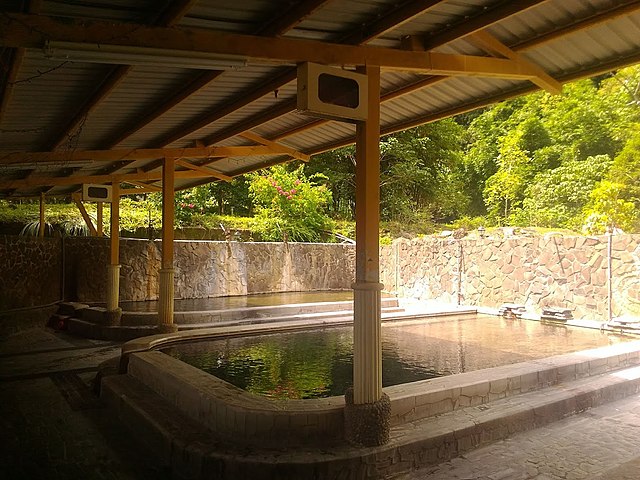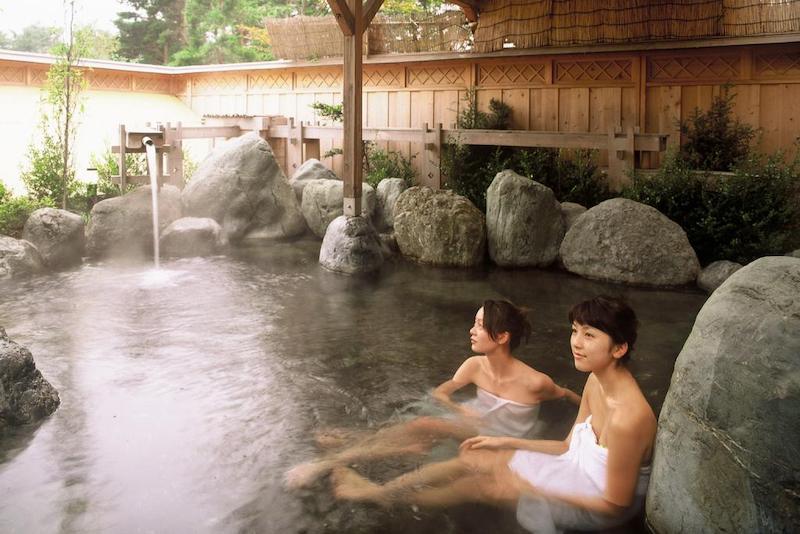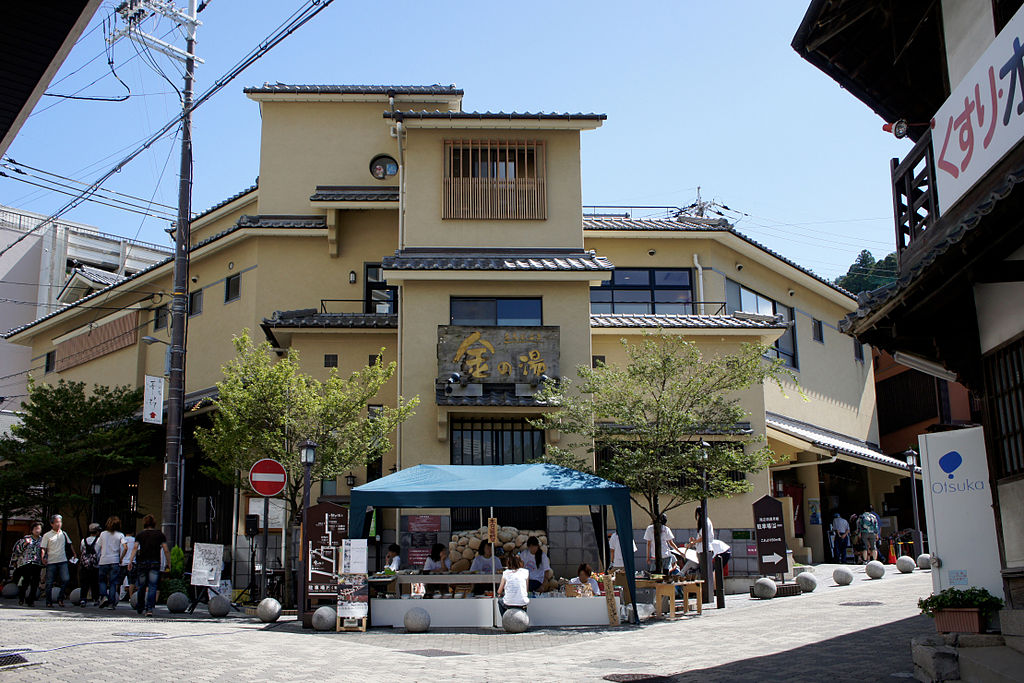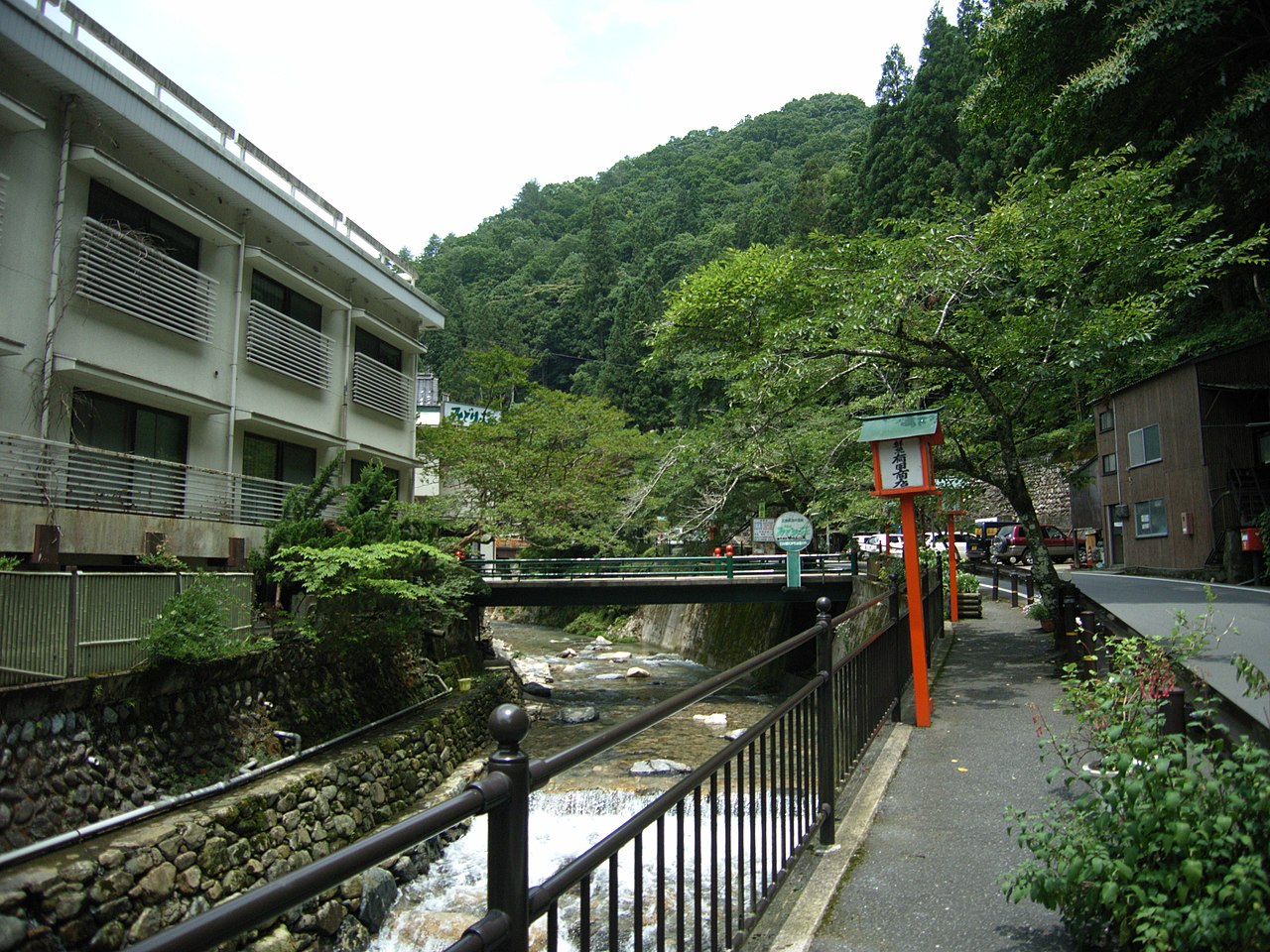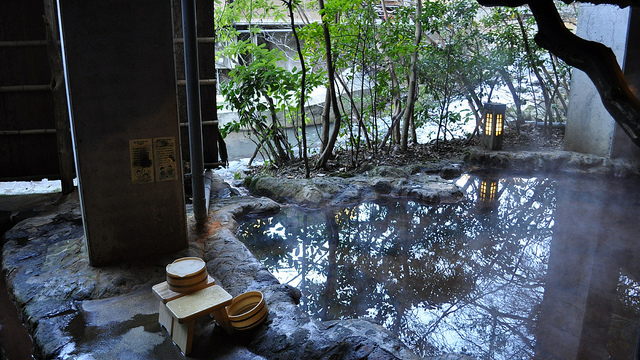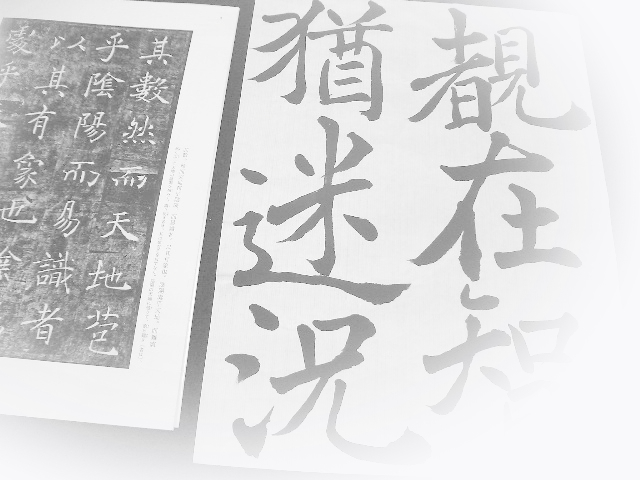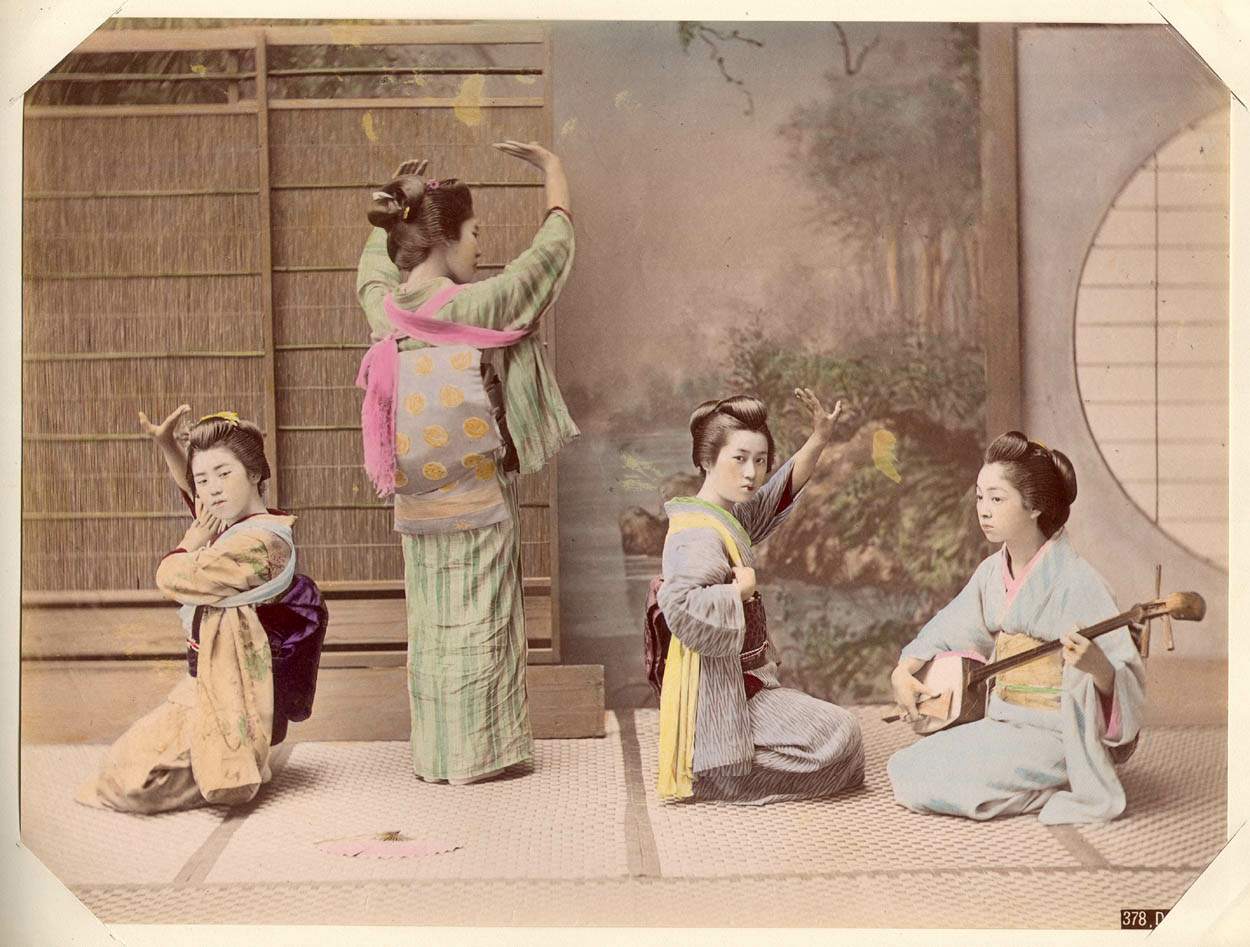Sep 28, 2022
A Guide to Onsen and Super Sento in and around Tokyo
The onsen is one thing that immediately comes to mind when one thinks of Japan, and it’s no mystery why. In addition to appearing in most tourism-related media, they are excellent places to relax. With so much seismic activity, from small sento bathhouses to entire onsen towns, sento and onsen dot the archipelago. For all that, though, Tokyo doesn’t have many hot spring options. So, unless you have the time to take a mini-vacation to an onsen town or feel like trying out one of the many sento, which function more as a place to get clean than truly relax, then your options are limited. This is where Tokyo’s “Super Sento” come in. The Super Sento functions as an upgrade to the traditional sento while also bringing some of the ambiance of those famous hot spring towns such as Atami or Hakone. We’ve compiled a few options where you can soak to your heart’s content and experience the onsen in all of its glory.
Manyo Club Onsen in Yokohama
While not technically in Tokyo, Manyo Club Onsen is an excellent addition to this list. Conveniently located in the Minato-Mirai area of Yokohama, the Manyo Club is directly across the street from Yokohama’s iconic Ferris Wheel. With so many other attractions nearby, it is also a great place to relax after visiting Chinatown or the Red Brick Warehouse. It carries all the amenities of a fine countryside hot springs hotel but with dramatic views of the Yokohama seaside. There is even an attached hotel if you want to stay a night or two.
The main draw, of course, is the onsen. The water is trucked from springs in Atami and Yugawara, and there are a variety of pools to soak your stress away. You have options from the usual, including huge indoor tubs and various rooftop outdoor pools overlooking the Minato Mirai district. There are even private tubs, rented by the hour for “private time” with family or significant other.
In addition to the onsen, there are several other amenities as well:
- Full-service restaurants, both buffet and set menu style
- Manga reading room and Internet cafe
- Traditional Thai massage and British-style reflexology services
- Dry, salt, and herbal sauna rooms
- Gift shop, meeting rooms, banquet hall rentals, and more
Manyo Club is just 30 minutes by express train from central Tokyo. It can be reached directly using either Minato Mirai station on the Minato Mirai line (Tokyu Toyoko line) or Sakuragi-Cho station on JR’s Keihin-Tohoku and Negishi lines and the Yokohama City Subway Blue line. A free shuttle service operates between Yokohama station and the resort from 10 am until 11 pm hourly.
Opening Hours: 24 hours a day, seven days a week.
Address: 2-7-1, Shinko, Naka-ku, Yokohama, 231-0001 (map link)
https://www.manyo.co.jp/mm21/eng/
Closest Railway Station:
Sakuragicho Station: JR Keihin Tohoku Negishi Line / Municipal Subway Line
Minatomirai Station: Minatomirai Line
Tel: 0570-07-4126
Ticket Info (Tax exclusive)
Adults (older than Junior High School): 2,500 yen
Children (Elementary School Students): 1,400 yen
Children (3 to under school age): 940 yen
Children under 3: Free.
Credit Cards: all major cards accepted
Languages Spoken: Japanese, English
Oedo Onsen Monogatari Urayasu Mangekyo
Did you think that Tokyo Disneyland was the only reason to visit Urayasu? Located just 25 minutes from Tokyo Station, this Super Sento will give you another reason to visit Chiba. The second you walk in, it’s like being transported into a travel brochure. Once you’ve entered, head to the changing room and swap your streetwear for a yukata, and you’re ready to stroll around the complex, which is set up like a small Edo-era village in the middle of the summer festival season.
URL: https://urayasu.ooedoonsen.jp
Fees:
Weekdays M~F Adult: JPY1,888, Children: JPY858
Weekends, Holidays Adults: JPY2,218~2,548, Children: JPY 968~1,078
Late Night Discount Entry: 1,980 JPY
Amenities: Japanese Restaurant, Game Corner, Fortune Telling, Massage, Sauna, Day Spa
Hours: Open every day from 11 am to 12 pm; last entry is 11 pm.
Access: JR Keiyo Line, Shin-Urayasu Station, 29 min. walk, but a free shuttle bus is available by reservation
Address: 7 Chome-3-12 Hinode, Urayasu, Chiba 279-0013 (map link)
Saya no Yudokoro at Maenohara Onsen
Originally a wealthy family’s private estate, this natural hot spring oasis in Tokyo’s Itabashi Ward opened to the public in 1946. The surrounding neighborhood has grown and developed in the intervening years, but the onsen retains all of its Showa era glory.
Unlike many other super sento in Tokyo, the waters here come from 1500 meters directly underground and are naturally high in sodium chloride, giving its water a greenish tint. It’s said to be suitable for those who have arthritis and poor circulation. Another noteworthy point is the Japanese gardens surrounding the facility. It is tough to remember that you’re still in the middle of Tokyo when strolling the grounds and sipping a hot cup of green tea from the restaurant inside. That restaurant serves traditional Japanese cuisine like tempura, udon, and more, serving as a perfect follow-up to your soak.
URL: www.sayanoyudokoro.co.jp/english
Fees:
Weekdays M~F Adult: JPY890, Children: JPY550
Weekends, Holidays Adults: 1,120, Children: JPY750
Amenities: Japanese Restaurant, Massage, Sauna, Aroma Therapy
Hours: Open every day from 11 am to 12 pm; last entry is 11 pm.
Access: Mita Subway Line, Shimura-Sakanoue Station, Exit A2, eight min. walk
Address: 3 Chome-41-1 Maenochō, Itabashi-Ku, Tōkyō-to 174-0063 (map link)
Kamakura, CC BY-SA 4.0, via Wikimedia Commons
Jan 12, 2022
Onsen – The How To’s, Do’s and Don’ts
Seismic activity is so ingrained in Japanese life that folklore tells of Namazu, a giant catfish who lives beneath the country and is restrained by the god Kashima. However, when Kashima lets down his guard, Namazu thrashes about, causing violent earthquakes. To live in Japan is to see this activity as part of daily life. But, as with all things, we must make the best of what comes our way, and here this takes the form of onsen, the hot springs that the ‘catfish below the earth’ arouses through this volcanic country.
What is an onsen?
An onsen is probably best described as a hot spring bathing spa. There is evidence that the Japanese have enjoyed these baths since time immemorial; excavations in Ehime Prefecture uncovered three-thousand-year-old pottery where the site of Dogo Onsen now stands.
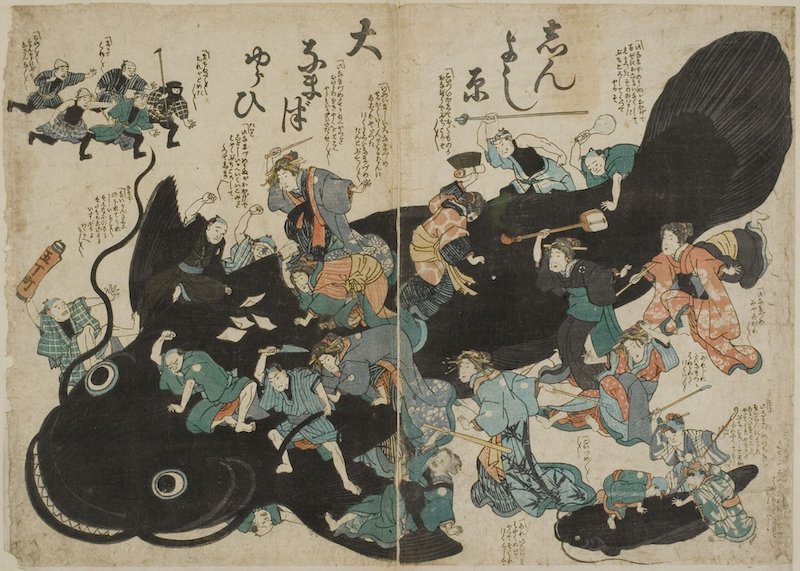
It is unknown when these spas were first used for their perceived restorative quantities, but during the warring times of the Sengoku Period (1467-ca.1600), Buddhist monks propagated the healing properties of the mineral-laden waters, and warriors injured in battle would make their way to an onsen for rejuvenation and rehabilitation.
Today, onsen are not the sole preserve of soldiers, as they have become the location of choice for Japanese looking to get away. A 2013 survey by JTB, one of Japan’s largest travel companies, found that 84 percent of its respondents visited an onsen at least once a year, with nine percent going more than ten times.
There are approximately three thousand onsens in the country, and they can be found in all shapes and sizes, from outdoor foot baths to the small tubs of guest houses, to massive complexes. In these larger establishments, you will find many facilities, including massage chairs and table tennis. The latter is a surprisingly important part of onsen culture, with many children citing it as the highlight.
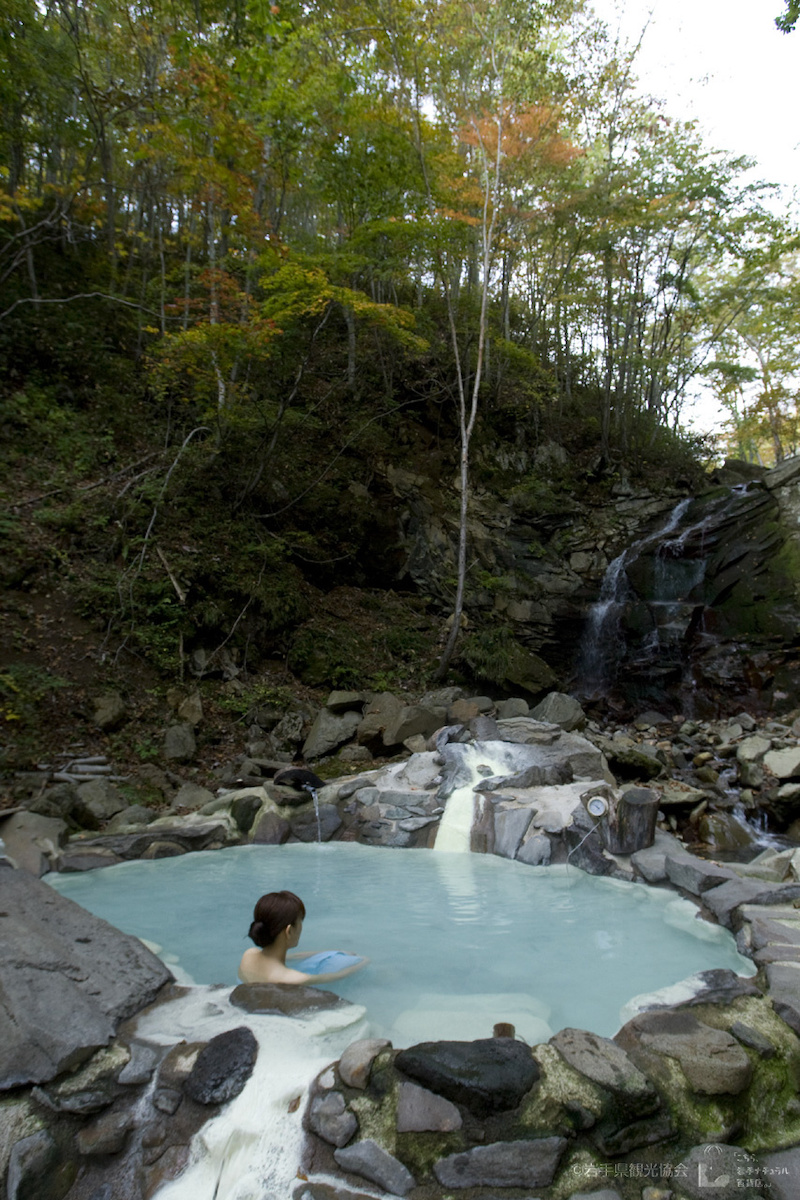
However, on the other side of the curtain is where the action happens. Here you will find the indoor baths, which are piping hot and must contain at least one of nineteen designated naturally occurring chemical elements (there have been numerous scandals when onsen were artificially adding ingredients to the water). Further, there are cold plunge pools, sauna, steam rooms, massage areas, and hot-stone therapy rooms, but the best of all is the rotenburo or outdoor baths.
The rotenburo are what makes onsen so special, particularly in winter, when you can sit in the steaming water as the snow falls, and some places afford you spectacular views. In Shizuoka and Yamanashi Prefectures, some of the best rotenburo overlook the mountain ranges, with Mount Fuji in the distance. It’s a stunning view that no visit to Japan is truly complete without.
What are the rules?
Like many aspects of Japanese culture, there are strict forms of etiquette to consider when visiting an onsen, and if you wish to impress your hosts, it is best to follow the rules.
- Shoes off – If you have spent any time in Japan, this will probably be a no brainier. Onsen pretty much always have tatami floors, and thus the wearing of shoes is strictly prohibited.
- Get naked – Once the shoes are off, it’s time for the clothes. Japanese talk about the benefits of “naked communion,” hadaka no tsukiai, the breaking down barriers and meeting on a level footing. Getting naked can be somewhat daunting for those not used to public nudity, but as baths are usually same-sex, it is no different from a gym or swimming bath locker room. If you do feel the need to cover your modesty, you can use your towel (more of which, later). Once you have removed your clothes, place them in a basket. There are often coin lockers for valuables. Ask at the front desk for details. (Before you have undressed, of course!)
- Wash properly – Before taking the plunge, it is important to wash thoroughly. All onsen will provide washing stations with stools, faucets, and wooden buckets. Most have showerheads and toiletries, though some do not, so it is advisable to bring your own soap just in case. Washing with soap and shampoo is not necessarily required; however, many younger bathers do so. If you use soap, be sure that you rinse well afterward, ensuring that no suds fall into the bathwater. You may need to scoop water from the baths in some older onsen. If this is the case, it is acceptable not to use toiletries to avoid soap suds getting into the bathwater. Once you have finished bathing, clean and rinse your washing station.
- Towel – Anyone who is a fan of The Hitchhiker’s Guide to the Galaxy will know the importance of bringing a towel, and onsen is one of those places where it is especially crucial. Many onsens will provide a small hand towel, sometimes at a similarly small fee, although many guests will bring their own. This towel is dual-purposed as bathers can use it to wipe away sweat in the humid air and provide a degree of modesty for those who require it. At no point should your towel enter and thus contaminate the bathwater. Towels can be laid by the side of the pool or balanced folded on the head. If a towel accidentally drops into the water, wring it out outside the bath.
- Wash again – This is less a rule than a recommendation. After bathing for a while, it is advisable to wash once more (using soap if you prefer) before returning the bath. Washing again will clean away your sweat and allow you to cool down. Onsen can be very hot (the water should be a minimum of 25 degrees) and can cause fainting, particularly if alcohol has been consumed previously. Once you are clean again, lower yourself for another dip.
- After bath – When finished, wipe off as much sweat and excess water as possible with your hand towel before returning to the locker room. Some bathers may wish to wash one last time, but it is advisable not to rinse before dressing for the spring water’s minerals to have full effect.
Can I go with my family?
Onsen is considered a communal affair, and people often go with friends, families, and even colleagues. Traditionally men and women bathed together in both onsen and sento, but this ended with the introduction of western values during the Meiji era.
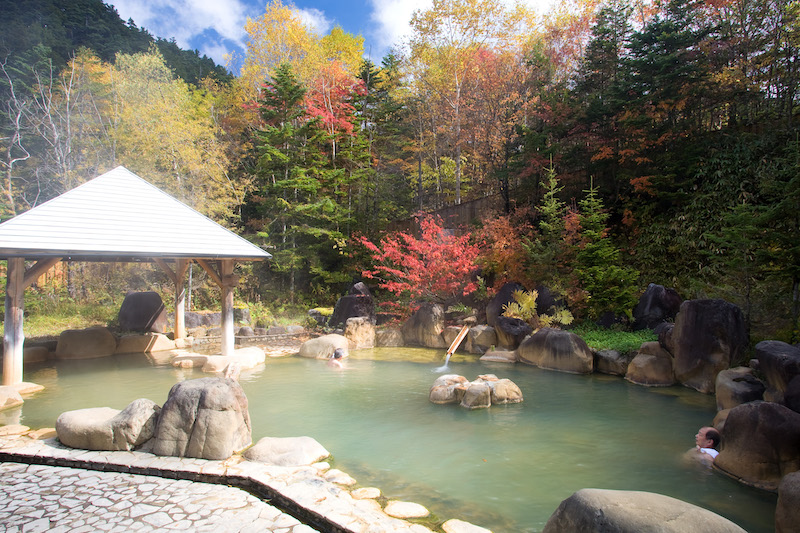
This separation can make family excursions difficult; however, young children of either sex are usually accepted in men’s or women’s baths. For older children or couples wanting to spend their onsen time together, there are konyoku baths. Men cover their genitals with a towel in these mixed bathing onsens, and women will wrap themselves in a full-sized towel. In some prefectures, Tokyo included, mixed-nude bathing is banned, so swimsuits or special bathing suits called yugi are required.
Are my tattoos okay?
Unfortunately not. Despite radical changes in skin art culture in Japan in recent years, tattoos are still seen as, if not necessarily the sign of gangster membership, at the very least a symbol of delinquency. Many onsen ban bathers sporting body art, no matter how small or non-confrontational. If it is small enough, you may be able to get away with wearing a water-resistant bandage, but otherwise, you should be respectful of the establishment’s regulations.
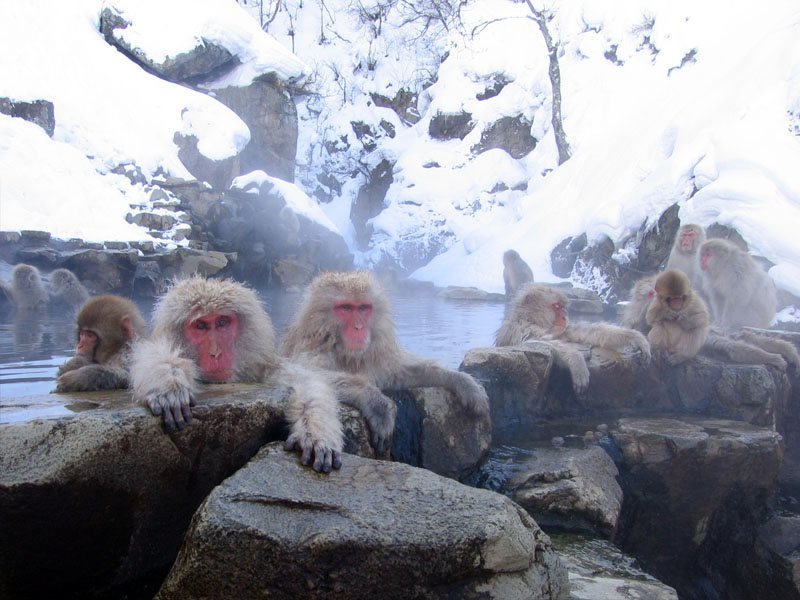
Image by Yosemite (Own work) [GFDL or CC-BY-SA-3.0], via Wikimedia Commons
Image via wikicommons [public domain]
Image provided by Yamanashi Tourist Organization with permission
Image provided by Gifu Tourist Organization with permission
Image provided by Iwate Tourist Organization with permission
Dec 12, 2019
The Top Onsen Resorts in and Around Kobe
If you’re stressed out, had a tough week at work, or feel de-motivated, visiting an onsen is the perfect remedy for you. These hot spring baths will help you regain your energy and forget all your stress. In Japan, people have been visiting onsen for hundreds of years to cleanse their bodies and souls.
What is an Onsen?
You may have seen onsen in Japanese anime, drama, and movies — they are usually depicted as steamy public or private baths near mountain springs. Onsens are everywhere in Japan. Some are located within bustling cities, whereas others are relaxation havens in the mountains or on islands. Many onsens are traditional ryokans, which use natural aesthetics. Others are more modern, housed in classy hotels. Popular with locals and foreign visitors alike, onsen may even be one of the reasons why you want to visit Japan.
Tips for Visiting Onsen
Before discovering the best resorts in Kobe, it’s essential to learn how to experience onsen the Japanese way:
1. Bring shampoo, body soap, a small towel to use as a washcloth, a larger towel for drying, and a hairband or hair clips (if your hair is long enough for a ponytail). Slippers and hairdryers are usually provided.
2. The male and female bathing areas are typically separate. Men should head to the blue curtain marked with 男 and women to the red curtain marked with 女.
3. Be prepared to undress in front of other people of the same sex in the common changing room. You should undress completely, put your clothes in a basket, and then place the basket on a shelf. Only take your small towel, soap, and hairband to the bathing area.
4. Head to the small wash places along the walls and wash thoroughly (including your hair) before entering the tub. Be careful to avoid splashing soap and water.
5. Once finished washing, tie up your hair, clean the area, and put everything back for the next person to use.
6. After bathing, it is common to drink cold milk — many Japanese people say this is THE best!
7. Be aware that many public baths prohibit tattoos, particularly tattoos that cover a large part of the body. There is usually a “no tattoo” sign near the entrance at these places.
Top Onsen in Kobe
Kobe has some of the most luxurious, famous, and popular onsen in the country. This should come as no surprise since Kobe is one of the most attractive places in Japan, a renowned historic port city, and located close to the mountains.
Ninomiya Onsen
This charming onsen is close to Sannomiya station in downtown Kobe. It is actually a sento bath, meaning the pools use heated tap water. However, there is one pool filled with real onsen water. Rich in minerals, it has a distinct metallic scent. There is nothing extraordinary about Ninomiya Onsen, but its low price makes it an ideal place to go several times a month — or even multiple times a week. Plus, it also has a salt sauna.
Address: 4-2-18 Ninomiyacho, Chuo Ward, Kobe
Open Hours: 2:00 p.m. to 10:00 a.m.
Price: 450 yen
Minatoyama Onsen
Although it’s some distance from the city center, Minatoyama Onsen is still easy to reach by public transportation — and it’s certainly worth a visit. The resort has five different onsen pools at different temperatures ranging from 26 degrees Celsius to 46 degrees Celsius. The price is midrange, definitely not too high for what you receive. Plus, it’s one of the few baths that allow people with tattoos to enter.
Address: 26-26-1 Minatoyamacho, Hyogo Ward, Kobe
Open Hours: 5:00 a.m. to 10:30 p.m. (last entry 10:00 p.m., closed Wednesdays and public holidays)
Price: Adults 680 yen (500 yen between 5:00 a.m. and 7:00 a.m.), junior high students 430 yen, elementary school students 230 yen (100 yen on weekends), infants enter free
Arima Onsen
In this small but famous onsen village behind Mount Rokko, there are two natural hot springs called Kin no Yu (meaning Golden Spring) and Gin no Yu (meaning Silver Spring). Their names come from the colored water, which is rich in minerals and has many health benefits, especially for the skin. It’s worth spending a whole day in Arima Onsen, as the town is beautiful. You can even stay overnight in a ryokan with your own private bath.
Address: 833 Arimacho, Kita Ward, Kobe
Open Hours (Kin no Yu): 8:00 a.m. to 10:00 p.m. (last entry 9:30 p.m., closed second and fourth Tuesday of each month, Wednesday if Tuesday is a holiday, and January 1)
Open Hours (Gin no Yu): 9:00 a.m. to 9:00 p.m. (last entry 8:30 p.m., closed first and third Tuesday of each month, Wednesday if Tuesday is a holiday, and January 1)
Price (Kin no Yu): 650 yen
Price (Gin no Yu): 550 yen
Price (both): 850 yen
Gekkoen Korokan
Nestled behind Mount Rokko is one of the oldest onsens in Japan. Although Gekkoen Korokan is outside the metropolitan area, it is easily accessible. In addition to the hot baths, amenities include free-flowing beer and cooking classes.
Address: 318 Arimacho, Kita Ward, Kobe
Open Hours: 11:00 a.m. to 3:00 p.m.
Price (lunch included): Adults 3,800 yen, elementary school students 2,300 yen, preschoolers 1,750 yen, infants free
Kobe Minato Onsen Ren
What could be more lovely than lounging in a steamy bath while looking out at the ocean? This modern hotel resort, located by the harbor, combines traditional and contemporary amenities to bring you pure luxury. Your room will have its own terrace with views of the bay. To reach Kobe Minato Onsen Ren, take a five-minute shuttle bus from Sannomiya station.
Address: 1-1 Shinkocho, Chuo Ward, Kobe
Price (for a room): From 16,000 yen
Awaji Hamarikyu
Enjoy a private bath in your room overlooking the beach. Situated on Awaji Island, this onsen resort is surrounded by splendid views of the countryside. The ryokan has Japanese style, Japanese/Western-style, and Western-style suites to suit your preferences.
Address: 970-81 Matsuhokotsuro, Minamiawaji
Price (for a room): From 15,000 yen
Tocen Goshoboh
If you’re a history buff and would love the chance to pamper yourself in an 800-year-old ryokan, this onsen resort (located just 40 minutes from Kobe Airport) is for you. Feast on delectable Yamaga cuisine from the Kamakura period. Then, plunge into your own private hot spring and allow the warmth to seep into your body and soul. Tocen Goshoboh even provides guests with their own yukata to complete the traditional feel.
Address: 858 Arimacho, Kita Ward, Kobe
Price (stay and spa): 10,200 yen
Hyoe Koyokaku
Just 100 years younger than Tocen Goshoboh, Hyoe Koyokaku has a “golden spring” — its yellow color is due to the iron and salt in the water. You can choose between three public baths or take advantage of the peace and quiet offered by a private bath. This gem of a resort also serves a multi-course Kaiseki menu that is sure to please any tastes. To arrive, it’s just a six-minute walk from Arima Onsen station.
Address: 1904 Arimacho, Kita Ward, Kobe
Open Hours: 6:00 a.m. to 1:00 a.m. (5:00 a.m. to 11:00 p.m. for San-no Yu bath)
Price (for a room): From 29,500 yen
Kaigetsukan
Right by the beach on Awaji Island, and with amenities including a hot spring bath, a spa, table tennis, and billiards, you’ll want to spend more than a day at Ryokan Kaigetsukan. It’s a great place to stay during your time in Kobe, as everything else in the city is easily accessible. This is an onsen you’ll want to make your home away from home.
Address: 1-3-11 Kaigandori, Sumoto
Price (for a room): From 6,500 yen
Taketoritei Maruyama
Foodies who travel for gastronomical experiences will love the sumptuous seafood and wild vegetables served at this onsen. Better yet, you’ll receive a sumptuous spread of food straight to your room. Feast until your heart’s content after a dip in one of the two medicinal hot spring baths.
Address: 1364-1 Arimacho, Kita Ward, Kobe
Price (for a room): From 40,000 yen
Awaji Island Uzushio Onsen Umemaru
Nothing beats staying at a hotel where you have a hot spring, a sauna, delicious seafood, and easy access to all the must-see destinations in the city. Awaji Island Uzushio Onsen Umemaru provides you with all those amenities and more. For instance, you can have a massage, try out Japanese pottery, purchase gifts from the on-site shop or send a postcard to loved ones using the onsen’s postal service.
Address: 1137-9 Arimacho, Anaga, Minamiawaji
Price (for a room): From 34,000 yen
Different onsen resorts cater to different types of guests. For instance, business people can choose onsen with golf courses and high-end facilities, whereas elderly visitors can find ones with special amenities to make their stay more comfortable. Families often enjoy having larger private bathing areas to bathe together. You can also choose between modern baths and traditional medicinal onsen (for their healing qualities). The onsen resorts in Kobe, from the traditional ryokans to the glamorous hotels, provide the exact type of relaxation guests from all walks of life want and need.
By Yosemite (Own work) [GFDL or CC-BY-SA-3.0], via Wikimedia Commons
Feb 25, 2019
Arima Onsen: Come On In, the Water’s Fine

The mapmakers say Arima Onsen is a part of Kobe but it is way on the other side of Mount Rokko and is thus a world unto itself. And people have been making their way to this unique world for almost 1400 years, drawn to the magical powers of its storied hot springs. Built along winding mountainside streets, Arima is the oldest onsen (hot spring) town in Japan.
The documented records say that Emperor Jomei took the waters in 631 and Arima was soon anointed as the emperor’s royal onsen. The earth pumps out two varieties of piping hot water in this region of Kansai – one known as the Gold Spring (Kinsen) is colored reddish brown due to its richness in iron and salt. The other is the Silver Spring (Ginsen) which is colorless and enlivened by a dash of radioactivity. Together they combine to emit seven of the nine natural components considered vital for onsen curative effects – one of the richest springs in the world.
For today’s visitors, the Kinsen is a favorite among women who value it as a way to keep their skin moisturized and to “keep the old bones warm.” There are actually two types of Ginsen springs at Arima and they are considered useful in stimulating cell activation, building up the immune system and fighting off muscle fatigue. When swallowed, the Ginsen can work wonders with one’s digestive system and breathing its vapors can ward off bronchial infections.
Onsens like Arima are virtually unknown on the planet. Unlike its Japanese cousins, the hot springs are not located near volcanoes. The unique geology produces a wide variety of hot waters from mild to 98 degrees Celsius – a smidge beneath the boiling point. These waters were from an ancient sea and make their way from 60 km below ground.
The town around the springs
Some thirty hotels are peppered in the hillocks around Arima to cater to onsen holidays. These include large spas like the ryokan Taketoritei Maruyama and the Arima Grand Hotel. Outside the hotels, many of which were constructed western-style after the opening of the Kobe port 150 years ago, and private baths are two public bath houses, Kin no Yu and Gin no Yu. You can drink spring water from traditional gourds or indulge in a free foot bath if you do not want the full experience of taking the waters (between 500 and 700 yen usually). Nature trails also traipse past Buddhist temples and to some of the original seven Arima springs.
The Yumotozaka shopping street boasts traditional Edo-style wooden structures (when the historic spa town was at its most bustling) that house local businesses such as the Arima Kago that creates handcrafted bamboo delights and has been doing so since the 15th century. Trying a carbonated rice cracker known at Tansansenbei – baked with only local spring water, thank you – is a must. The waters also yield other types of meals. Within walking distance of the downtown area is the Arima Rainbow Trout Fishing Pond and you can get your catch grilled or fried.
Arima’s heritage as a tourist town catering to Japanese and Western tastes provokes a eclectic atmosphere best captured by the enduring tradition of geishas. These merrymakers have gone extinct in most hot springs towns but the traditional female entertainers and hostesses still sing and dance in the Arima hotels throughout the year.
By 663highland (663highland) [GFDL, CC-BY-SA-3.0 or CC BY 2.5], via Wikimedia Commons
Nov 27, 2018
Onsen In and Around Hiroshima

Hot springs, or ‘onsen,’ are a great idea any time of year, but there’s something about being outside and up to your chin in hot water that just really appeals in the depths of winter. Fortunately, you don’t need to book a room at one of the famous Kyushu hot springs towns, which are entirely overrun with tourists anyway. There are plenty of choices for a spontaneous hot springs getaway right here in Hiroshima.
Two words of warning. Even if you’re a complete novice, you doubtless know that there’s more to taking an onsen bath than just stripping down and entering the tub with a flawlessly executed back somersault. But if you want more in the way of guidance, you’ll find a good rundown of basic etiquette here. Also, in this part of Japan, many (but by no means all) natural hot springs contain trace amounts of radon.
Locals insist that the stuff is not only harmless, but beneficial, and the presence of the element is a selling point for these onsens. In their defense, at least one study of Misasa in Tottori Prefecture, where radon levels are three times as high as elsewhere, found significantly fewer cancer fatalities over a seventeen year period than in control areas. The town even hosts an annual Marie Curie festival. Of course, we all remember how Marie died. I leave it up to you to make your own decisions.
Three of the onsen listed below, Miyahama, Yu-no-yama and Yuki Lodge, are weak radon style hot springs.
Miyahama Hot Spring
This popular onsen is in Hatsukaichi city, only fifteen minute’s drive from the Miyajimaguchi ferry terminal. There are four inns, including Sekitei, well known for its garden. Many of the baths come with carefully framed views of Miyajima and the Seto Inland Sea. Come for the bath and, if you like, stay for the food. Both Sekitei and Hatago Sakura (another inn) compete to provide the best cuisine. Of course, you’re free to simply bathe as well, but this makes a very easy (albeit somewhat pricey) overnight getaway from downtown Hiroshima.
Address: Miyahama Onsen, Hatsukaichi City, Hiroshima, 739-0454
Access: 8-minute drive from the Ono Interchange on the Hiroshima-Iwakuni Road. Signs are clear.
Hours: Bathing Hours from 10:00 to 23:00 (last entry at 22:30)
Admission: Each of the inns has its own pricing. Benimansakunoyu, for example, charges 700 yen for adults and 400 yen for children 12 and below. Call the number below or check separately.
Telephone: 082 9-30-3533
Website: http://miyahamaonsen.com/
Yu-no-yama
This is one of those onsens with a history that may, or may not, be entirely on the up and up. Apparently discovered almost 12 centuries ago, what is certain is that Yu-no-yama was used by the Asano clan, lords of Hiroshima during the Edo period. It is a designated Significant Intangible Folk Cultural Asset of Japan, and with the picturesque Yuyamamyo Shrine set on a hill above the springs, it’s a pleasant place to take a hot bath. This is another weak radon type spring, and a special feature here is the ‘Utase yu’ bath, where cooled water pours from a height onto bathers, providing an invigorating massage.
Address: Oaza-wada, Yuki-cho, Saeki-ku, Hiroshima City, 738-0601
Access: About 25 minutes from the Itsukaichi Interchange and Hatsukaichi Interchange, via prefectural Route 41 of the Sanyo Expressway. Map on English website below.
Hours: Public bathing 9:00 to 20:00 (last entry 19:30)
Admission: Adults, 350 yen. Children, 150 yen.
Telephone: 082 9-85-0111
Website: http://yuki-lodge.jp/yunoyama/ Limited English here: https://www.hiroshima-navi.or.jp/en/post/007152.html
Yuki Onsen Lodge
Very close by Yu-no-yama are the several inns of Yuki Onsen. You’ll find the same kind of water here, as well as mountain scenery and a variety of dining options. Most day visitors head straight for the large Yuki Lodge, which is best equipped to accommodate guests who don’t intend to stay overnight. If there’s no snow on the ground, and there shouldn’t be this close to the coast, the area also offers some excellent hiking, or just a chance to stroll past the houses backed along the little Minochigawa River.
Address: 2563-1 Tada, Yuki-cho, Saeki-ku, Hiroshima-shi 738-0721
Access: Follow the same route you would for Yu-no-yama, and follow signs for Yuki Lodge.
Hours: 10:00 to 21:00 (last entry at 20:30)
Admission: Adults: 570 yen for single entry, 880 yen for an all-day ticket. Children, 210 yen single entry, 420 yen all-day.
Telephone: 082 9-85-0111
Website: https://yuki-lodge.jp/
Megahira Hot Spring Ski Resort
We’re moving deeper into the mountains now. In case you haven’t had enough skiing yet at any of the three resorts profiled in this month’s ski/snowboarding piece, you can look into a day trip to Megahira, the closest ski resort to downtown Hiroshima. It’s got less to offer as a ski resort than some of the others, but it’s still fun, with a good snowboard park and nearly six kilometers of ski runs.
As an onsen destination, there are two reasons you might choose Megahira. First, no radon, if that’s something you’re uncomfortable with. Second, if you’re shy about getting naked, or you’re with a mixed-sex group who wants to bathe together, there are mixed baths here where patrons are required to wear bathing suits. For some, this may be a gentler introduction to the onsen experience.
For purists, of course, there are still sex-segregated baths where you go as God made you. On the women’s side, there’s even a bath made from the wood of a 45,000-year-old tree brought from New Zealand. And that’s not a chance you’ll get every day!
Address: 4301 Yoshiwa, Hatsukaichi-shi, Hiroshima-ken, 738-0301
Access: By car, about two kilometers from Yoshiwa Interchange off the Chugoku Expressway. Follow signs.
Hours: 10:00 to 21:00, Closed Mondays
Admission: Swimsuit baths; Adults, 1680 yen, Children 6-12, 840 yen, Children 3-5, 420 yen.
Segregated baths; Adults, 840 yen, Children 6-12, 420 yen, Children 3-5, 210 yen.
Telephone: 082 9-40-3000
Website: http://www.megahira.co.jp/pc/spa.html
windowmoon [CC BY-SA 3.0], via Wikimedia Commons
Mar 22, 2016
Nishiyama Onsen Keiunkan: How Many People Have Signed the Guest Register of this 1,300 Year Old Hotel?

Just doing the math is mind-boggling. A family business for over 1,300 years. Yes, there have been some heirs adopted in, but that is still 52 generations of the same family.
And even more amazing, tourists to the Nishiyama Onsen Keiunkan in Yamanashi Prefecture today still enjoy much the same experience as the ancient samurai who visited the hotel back in 705 CE. The hotel is certified by the Guinness Book of World Records as “the world’s most historical inn” and it may well be the world’s oldest business, period. By comparison, Europe’s oldest hotel, Zum Roten Baeren, is a mere child – the Freiburg, Germany hostelry will celebrate its 900th birthday in 2020. Old inns are sort of a Japanese thing as the second, third and fourth oldest hotels in the world are all in operation here (number two, the Hoshi Ryokan, is only 13 years younger than the Nishiyama Onsen Keiunkan).
The idea for the inn was originally Fujiwara Mahito’s. He was a son of an aid to Tenji, the 38th and then-reigning emperor, of Japan. Fujiwara built a small guest house near a hot spring (“onsen”) at a secluded spot in the mountains of the Kai region that is sometimes known as the South Japanese Alps. In addition to promoting the healing waters to the local townsfolk, Fujiwara encouraged weary military commanders to come and take the waters as well. Since this was the second year of the brief Keiun era before the ascension of the Empress Gemmei, the inn was dubbed Keiunkan.
How did the Nishiyama Onsen Keiunkan survive for over a millennium?
Through the years, centuries in fact, the Nishiyama has focused on service and doing what the inn does best – providing hospitality that flows like the spring waters with the spirit of Japanese harmony. The spa still sports only 37 rooms, each outfitted with a traditional tatami-mat floor, and 52 generations of operators have taken care to make only modest expansions to keep up with the demands of modernity. Of course the guest rooms all have baths and showers sourced with free-flowing spring water. Nishiyama Onsen Keiunkan is truly a space where time is measured in epochs and not years.
All that time the one constant has been the natural hot springs. The same low-alkaline, 126-degree water gushes from the earth now as then. In fact the hotel, last renovated in 1997, has dug an 888-meter well that taps 1,630 litres of soothing water per minute. The Keiunkan provides four open-air baths that melt into the serene mountain scenery and two indoor baths.
Guests enjoy a Mountain Kaiseki Banquet with in-season delights harvested from the mountains and rivers in season. Chefs prepare the highest quality A5-rank Koshu beef to a soft texture and elegant color. Meals are served to diners on the hotel’s prized dinnerware. Mt. Fuji and the treasured Jigokudani Monkey Park are nearby – the monkeys enjoy a dip in the local hot springs as much as their human counterparts. Packages are available between $500 and $600 per night; details can be found at the Nishiyama Onsen Keiunkan website.
Nishiyama Onsen Keiunkan
0556-48-2111
Photo by Yosemite (Own work) [GFDL or CC-BY-SA-3.0], via Wikimedia Commons
Oct 14, 2015
Japan’s Best Onsen Towns
As temperatures around the country fall, now is the perfect time to indulge in the Japanese pastime of onsen. Best described as a hot spring bathing spa, onsen is a long held tradition in Japan and the near endless supply of geothermal springs is the one positive aspect of living in a nation of constantly shifting tectonic plates. Below are some of the most highly regarded onsen areas in the country.
Kurokawa Onsen, Kyushu
The island of Kyushu is known for being perhaps the best area for onsen, and Kurokawa Onsen is probably the pick of the bunch. Located around 20 kilometres (12 miles) from Mount Aso, it is a beautiful town that has retained its traditional charm and resisted the big money lure of the concrete and neon spa hotels you find elsewhere. Kurokawa Onsen is particularly well known for its ‘rotenburo’ (outside baths) next to rushing rivers, such as the Yamamizuki bath, considered one of the best riverside baths in Japan .
Beppu Onsen, Oita
Another Kyushu based onsen area, Beppu, in Oita prefecture, is one of the country’s best known, and produces eight different springs. One of the most remarkable things about the onsen in Beppu, aside from the fact that you can see the steam rising up all over the city, is the variety of bath types. Rather than just having hot water onsen, Beppu also boasts steam baths, hot mud baths and sand baths where bathers are buried in naturally heated sand. If you want to try out the latter, head to Takegawara Spa. It was constructed in 1879 and is perhaps Beppu’s most famous bathhouse. Though be warned, the building is partially surrounded by a red light district.
Kusatsu Onsen, Gunma
Located in the mountains of Gunma at 1200 metres (4,000 ft) above sea level, Kusatsu Onsen is probably Japan’s most popular spa, and has been listed in Japan’s Top 100 Onsen at number one for the last 12 years in a row. The high quality water, as much as 32,300 liters of it being discharged every year making it the greatest quantity in Japan, is said to cure all diseases bar love sickness. The unique bathing method of jikanyu (where bathers sit in 48 degree water for exactly three minutes) and yumomi (stirring the water with long planks for cooling the temperature of the water, also serving as an important pre-bathing exercise) are customs that have been passed down since the Edo period.
Hakone Onsen, Hakone
If you want an onsen with a view, you can do no worse than gazing out over Mount Fuji as you soak in your spa. It is perhaps more down to its stunning view and its close proximity to Tokyo that makes the spa town of Hakone so popular, but what a view it is! Of course not all spas in the area have the advantage of being in eyeshot of the nation’s most enduring symbol, but if you can find one – particularly during the time of the magical Diamond Fuji – there is possibly a no greater Japanese experience.
Noboribetsu Onsen, Hokkaido
Noboribetsu is considered to be the best onsen in the northern island of Hokkaido. Part of the Shikotsu-Toya National Park, there are nine different kinds of water including various minerals such as iron, salt and sulphur. The latter is considered to be particularly good for the skin, but doesn’t leave you smelling so fresh (as a suggestion: don’t plan a long train journey directly after a sulphur bath. Your fellow passengers will not appreciate it).
Okuhida Onsen, Gifu
This one comes with a personal recommendation. Set up in Gifu Prefecture’s Northern Japanese Alps, the spa valley of Okuhida is a beautiful little spot famed for its outdoor rotenburo baths. There are a variety of bathing types, both segregated and mixed (some prefectures do not allow mixed bathing, though Gifu is not one of them), with five water sources feeding the towns along the valley. The largest, and oldest, is Hirayu Onsen, and is said to have been discovered in the 1560s by Takeda Shingen’s troops as they crossed through the Okuhida region.
Dogo Onesen, Ehime
If you are looking for an onsen with artistic pedigree, Dogo Onsen is the one for you. Mentioned in Japan’s oldest history book, the Nihon Shoki, it also pops up in Shikibu’s he Tale of Genji, Soseki’s Botchan and is the model for the bathhouse in the Ghibli anime Spirited Away. The main onsen is the Dogo Onsen Honkan, a wooden structure, dating from 1894. The interior of the Honkan is a maze of traditional stairways and rooms and the old-fashioned baths are furnished with granite stone and marble walls. Beautiful and historical combined.
Gero Onsen, Gifu
Just one and a half hours from Nagoya, Gero is a lovely town that is worth the trip for onsen lovers and ranidaphiles alike. Due to the city’s name sounding like the Japanese sound for ‘ribbit’ (in Japan frogs say ‘gero gero’), there are homages to frogs everywhere, but that is not why most people come. In a dramatic setting amongst the mountains of Gifu and with waters that are said to be particularly good for relieving neuralgia, skin complaints and rheumatism, Gero is an onsen town so old that it was famed in the 10th century and mentioned as being one of Japan’s top three in a document from the Muromachi period. Depending on the time of year you can bathe riverside, and all around the city there are small foot baths (ashi-no-yu) for free use.
Super Sento Options
Onsen in Tokyo
Tokyo has plenty of places you can get to if you are unable to escape the city! Below are a list of the ‘super onsen’ in the Tokyo area. So if you can’t get away to one of the places above, any one of these are a perfectly adequate place to enjoy the onsen experience.
- Oedo Onsen Monogatari in Odaiba: Old Edo recreated for your bathing pleasure)
- Asakusa ROX Matsuri-yu in Asakusa: Onsen bathing with a magestic view of the Tokyo Sky Tree
- Edo-yu in Ryogoku: Another Edo period spa offering bedrock baths, sauna and massage treatments
- La Qua near Tokyo Dome: Highly recommended spa treatments.
- Yudokoro in Kasai: Features the largest outdoor bath in Tokyo.
Onsen in Yokohama
Manyo Club Onsen in Yokohama’s Minato-Mirai district called 万葉倶楽部 Manyo Club in English is located a short 5 minute walk away from the Minato-Mirai line’s Minato-Mirai Station. The “super sento” carries all the amenities of a fine countryside hot springs hotel but with dramatic views of the Yokohama seaside.
Onsen in Nagoya
Canal Resort is in Nakagawa-ku, and is a super sento. It probably would not be considered among the “best” of Japan, but its available and very nice!
Onsen in Kobe
Arima Onsen is a hot spring town within in Kobe with a 1,000 years of history behind. Located away from the city center, on the other side of Mount Rokko, it enjoys a natural setting with a mountainous feel to it,, despite its proximity to Kobe and Osaka.
Onsen in Hiroshima
Yunoyama Hot Spring is s a traditional hot spring with over 1,000 years of history, it has even been designated an intangible Folk Cultural Asset of Japan.
Rules of Onsen
Like many aspects of Japanese culture there is etiquette to consider when visiting an onsen, and if you wish to impress your hosts it is best if you follow the rules. Before you head to the onsen, check out some of the how to’s, do’s and don’ts of the onsen experience.
Mark Guthrie
Photo: flickr.com “Kurokawa Onsen, Kyushu” by David McKelvey (CC BY-SA 2.0) -Modified
Photo: via flickr.com by anjuli_ayer (CC BY-SA 2.0) -Modified
Photo: via flickr.com by Christian Kaden (CC BY-SA 2.0) -Modified
Photo: via flickr.com by Takanori Ishikawa (CC BY-SA 2.0) -Modified
Mar 26, 2024
Leaving Japan? Better Get Some Souvenirs!
It is said that nothing is certain in this life but death in taxes, but I would like to add one more to that: change. Since coming to Japan, your life has probably undergone quite a lot of changes, with new experiences coming thick and fast. But now it is time to move on – whether it be back to your home country, or onward to a new adventure.
Whatever the reason, you will probably want to pick up a few mementos to remind you of your time here. Furthermore, there is a good chance that your friends and family will want something as well. As such, you will probably want to get some souvenirs (or omiyage, as it is called here). But what to get? And where to get it. Well, here are a few ideas to get you started.
Sweets, cookies etc.
Nagoya Station
If you want to pick up some tasty treats to bring for others, you can probably do no worse than going to the souvenir store Grand Kiosk in Nagoya Station. Located near the Central Gates, you can find a wide array of treats to suit all tastes, whether it be Tokugawa Ieyasu cookies, tebasaki crackers, or ebi furai chews.

Apparently the number one Nagoya treat should be related to an adorable chicken called Pyorin, and you can find a shop dedicated to him opposite Takashimaya.
Where: Nagoya, Nakamura Ward, Meieki, 1 Chome−1−4 JR Nagoya (map)
Furoshiki
Takashimaya
If you are looking for something a bit more durable (and you are in Nagoya Station) perhaps you could pop up to the 11th floor of Takashimaya and pick up a furoshiki. Furoshiki is a traditional Japanese wrapping cloth, often square-shaped, used for transporting goods, gifts, but with a little modern twist by way of a leather strap, they make really cook handbags.

With origins dating back to the Nara period (710-794 AD), these are prefect gifts (or keepsakes) to embody traditional Japan. I have given them to my sister and my mother as birthday presents, and they love them.
Where: Nagoya, Nakamura Ward, Meieki, 1 Chome−1−4 JR Nagoya, Takashimaya 11F (map)
Yukata
Komehyo Kimono
While nothing says ‘I went to Japan’ like getting a kimono, to be honest they can be a bit of a palaver. Yukata, on the other hand, are a lot simpler, but still retain that elegance. The word ‘yukata’ means ‘after bathing’, as they are often worn after onsen traditional Japanese ‘ryokan’ hotels. However, in the summer months these unlined kimonos are worn by men, women, and children particularly when at festivals.
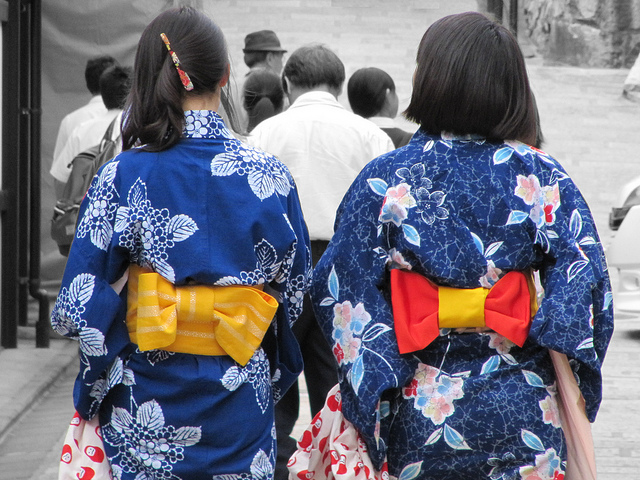
There are numerous places at which you can buy them, but one of the best is Komehyo in Osu. With two stories, low prices, loyalty cards and intermittent sales promotions, they stock everything for your yukata and kimono needs including vintage and new products.
Where: 2 Chome-19-22 Osu, Naka Ward, Nagoya (map)
Katana
Sword Buyers’ Guide
Okay, so this is all very dependent on whether your country of origin will allow you to bring it in to the country, but an authentic Japanese katana blade has to be the ultimate in Japanese souvenirs. For samurai, the katana – and other bladed weapons such as the tachi, tanto, and wakizashi – was such an essential part of life that they were required to wear them at all times as a signal of their status.

But it was more than just a weapon for battle; it also provided spiritual protection. Having a sword on display in your home was comparable to putting a crucifix on your wall; it warded against evil spirits, signified your belief, and it was a symbol of your strength. Of course, you can’t just wander just any shop and pick up a blade, you need to go to a specialist. The best way to get one is to get contact local katana aficionado Chris Leeber by emailing him at bladesofjapan@gmail.com or by going to his website sbg-sword-store.sword-buyers-guide.com/blades-of-japan.
Images: By Bert Wishart
Image: By flakyredhead via flickr.com [CC BY-NC-ND 2.0 DEED]
Image: By Chris Leeber
Mar 26, 2024
Art Classes in Kumamoto
Whether you want to try your hand at some traditional handicrafts , ceramic painting or fancy learning the art of Japanese calligraphy, there is a variety of arts and crafts classes and workshops across Kumamoto prefecture. You won’t need any level of expertise, just a willingness to give it a try. Here are a few sessions worth checking out.
Traditional Handicrafts
A must visit for any arts enthusiast looking for hands-on opportunities in Kumamoto is the Kumamoto City Handicrafts Promotion Center. This museum in the city’s Minami ward offers craft-making for both adults and children. Sessions include woodworking, bamboo crafting, leather crafting and higo zogan (gold inlay). All you have to pay for is a cost towards the materials. There are also year-long classes held twice a month for those that want to delve a little deeper, as well as occasional pottery workshops where visitors can try molding and painting. If you want to watch first before trying yourself, you can attend one of the center’s free demonstration sessions.
Website: https://kumamoto-guide.jp/culture/en/kougei/
Ceramics
Kyushu is a region well-known for its ceramics, and Kumamoto is associated with the traditional styles of Shodai and Koda. In addition to the sessions at the Handicrafts Promotion Center, there are a couple of other places in Kumamoto of note for ceramic art learning. Hanabusagama is a 15-minute walk from the downtown district and is the studio of renowned ceramics artist Hideo Maeda. You can try a 2-hour taster session in ceramic painting or pottery-making for a little over 2,000 yen, or regular classes (from beginner to advanced) involving the potter’s wheel, firing and painting, starting at 4,000 yen a month. There is also Genngama on the northern outskirts of Kumamoto, where you can mould and paint items such as plates, bowls and cups.
Japanese Handwriting
Japanese calligraphy, also called shodo, is an ancient art-form dating back to the Heian period and linked to Zen Buddhism. The go-to place to equip yourself with the skills necessary to practice this in Kumamoto is the Lucky Art Gallery in central Chuo Ward. The tutor provides 2-hour sessions where you can learn handwriting techniques with a brush, as well as more detailed calligraphic art mixing letters and pictures.
Website: https://lucky-lucky.jp/
Kijiuma Painting
For something truly unique to Kumamoto, you can’t beat Kijiuma art. The kijiuma is a small wooden painted Japanese toy dating back over 800 years. Toys are painted in vibrant colours and are seen as lucky charms associated with the healthy growth of children. The kijiuma has become a popular souvenir in many parts of Kyushu. If you visit Kumamoto’s Kurokawa Onsen, you can participate in a 60-minute Kijiuma painting session where you can design your own unique toy for around 1,300 yen.
Website: https://www.kurokawaonsen.or.jp/eng_new/
Japanese Paper Making
Located in the Aso district in northern Kumamoto, Art Washi Kobo Hasuki runs special sessions where you can make and design your own washi paper – a traditional hand-processed Japanese paper made from plant and tree fibers mixed with water. The paper is tougher than standard paper and is great for craft-making. In fact, it’s a craft that UNESCO has designated an intangible cultural heritage. In these hour-long sessions costing 1,200 yen, you can make one sheet of decorated paper or two postcards in a variety of colours.
Website: https://shirakawasuigen-washi.com
Original: Kanko from Nagasaki, JapanDerivative work: Minh Nguyễn, CC BY 2.0, via Wikimedia Commons
Feb 28, 2024
Dance Classes in Kumamoto
Whether you want to shake your body to the beat or learn something a bit more structured, you can find a wealth of dance classes to suit all needs in Kumamoto. Here is just a small selection of what’s happening in the prefecture.
Ballroom Dancing
Having once been quite an elite art-form, ballroom dancing has become something of a worldwide craze in recent years and now anyone can learn the disciplines. Several studios in Kumamoto offer lessons. These include Dance Academy Liebel, which covers a wide range of ballroom styles in its program. Beginner, intermediate and advanced classes are offered, starting at 500 yen per lesson. For Latin enthusiasts, Happiness Dance in central Kumamoto teaches the likes of Salsa, Cha Cha Cha, Cubano and Kizomba. Lessons are 1,000 yen.
Street Dance
Very popular with the younger crowd in Japan at the moment, although older adults can also learn and perform. There is no shortage of street dance schools in Kumamoto. Rhythm Market has three studios in the prefecture and caters for wannabe dancers from 3-65 years old (and beyond!). Styles include hip-hop, breakdance, RnB and J-Pop. A great place for beginners is Ivy Dance Studio. Learn techniques including hip-hop, jazz-funk, lock and waack. Weekly classes are 5,850 yen per month or you can have unlimited weekly sessions for 12,300 yen.
Ballet
Ballet is slightly more niche and technical than the likes of ballroom and street dance but is a beautiful and rewarding dance form that offers great performance opportunities if you stick at it. The Elite Dance School has a classically-trained British teacher who specialises in working with young children through to middle school, although there are classes for adults too. The junior classes fill up quickly and there may be a waiting list. Other than ballet, the school also offers jazz and modern stage dance.
Zumba
Zumba combines Latin-inspired dance with an exercise workout and so is perfect as a way of enjoying the liberating thrill of dancing while keeping in good shape at the same time. Some sports centers and gymnasiums include Zumba classes in their keep fit program. However, if you want something a bit more structured then head along to the Dance and Fitness Studio Zen in Higashi ward. Beginners Zumba is on offer for all ages and abilities, alongside other activities such as street dance, belly dancing and classes for kids. Prices start at around 4,400 yen per month but introductory sessions are often free.
Japanese Dancing
Japan has several different traditional dance styles that you can watch performed at cultural events. The chances to properly learn these dances are not widespread, but occasionally you may find a taster session or short introductory course at one of Kumamoto’s expat clubs. Women in Kumamoto interested in Japanese dancing can also contact the Yamaga Onsen Tourism Association to book up a Yamaga Toro dance experience. This is a lesson where you learn from women from the local dance preservation society while dressed in a kimono and traditional lantern-shaped paper hat. Enrollment fees start at 3,200 yen.
Address: 1499 Yamaga, Yamaga City (Yachiyoza Theater)
Kusakabe Kimbei (1841-1934), Public domain, via Wikimedia Commons
